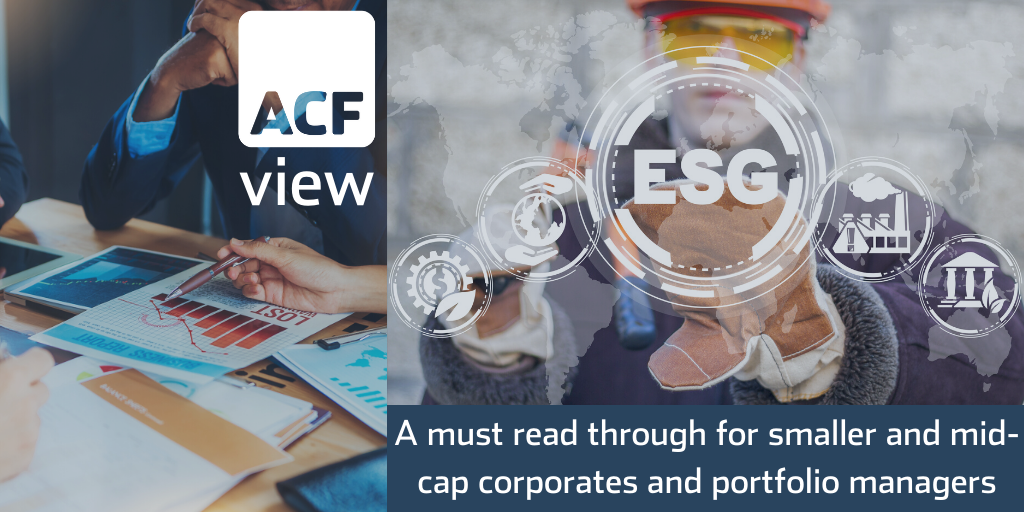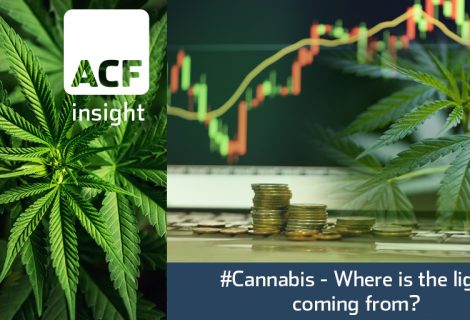ESG – 12 month read-through for small and mid-caps
A report from State Street Global Advisors (part of the trillion dollar club of leading asset managers that set terms for the rest of the investment industry) published towards the end of last year made some interesting points about ESG for the fund/portfolio management and beneficiary communities. There are equally interesting read-throughs for small and mid-cap corporates related to volatility, valuation and so research.
In our view, the report’s target audience is organisations with AUM (assets under management) greater than $50bn, however we have pulled out the key points that provide some useful insights for smaller and mid-cap companies looking for stable high quality investors, improved valuation and lower volatility. Our observations are equally relevant to fund managers under the $50bn AUM mark looking for enhanced portfolio performance and reduced volatility.
Below we present our version of the key points from the report and our read through for smaller and mid-cap corporates and portfolio managers.
• The report estimates that $30 trillion (up 33% in two years) of investment money is now filtered using ESG, $5 trillion ahead of our conservative $25 trillion estimate for YE20. $30 trillion is about 25% of the global total of professionally managed assets.
•Fiduciary duty, regulatory requirements and reducing risk through lower volatility are three of the top drivers pushing the industry towards using ESG filters.
•Pension funds (a type of mandate holder or beneficiary) are most concerned with reputation risk and so they are demanding adoption of ESG as a filter by fund/portfolio managers.
•Underlying drivers are the Global Reporting Initiative (GRI), the Sustainability Accounting Standards Board (SASB) framework and the UN PRI (Principles for Responsible Investment). The desire to do good is also statistically significant according to the report and that is probably related to the changing cohorts and younger generations now coming into positions of influence in their portfolio manager careers.
•44% of the cohort in the report have no in-house ESG specialists today and 100% expect to have hired analysts for the role within 3 years.
•97% of the cohort ranked the ability to measure and so reduce portfolio risk (mostly via lower volatility and reputational risk reduction) as their first concern and so their top driver for adopting ESG filtering.
•Of the 300 firms surveyed in the report that were not already applying ESG filters, European investors signalled that they expected to incorporate ESG filtering factors within the next 12 months if they were not already doing so.
•Index investors were more often able to measure a tangible impact on performance from ESG filtering, defining exactly how much extra performance was trickier.
•Active investors were more often able to measure a reduction in risk via lower volatility from ESG filtering. This is particularly pertinent to smaller and mid-size companies because it suggests that having an ESG policy helps to reduce volatility, in much the same way that strategically delivered consistent regular research reduces volatility (yes we are singing our own book on this last point but it is also statistically valid).
Read through for small and mid-cap companies:
Share price volatility is a highly destructive characteristic for quality long and mid-term investors and often a particularly acute issue for small and mid-caps. A combination of regulation, reputation risk and the drive to reduce volatility in their investments will drag smaller fund/portfolio managers along the same path as the $50bn AUM plus group.
We see this change for portfolio managers with less than $50bn under management occurring over a 12 month horizon, so a matter of relative immediacy. We expect forward thinking ambitious SHNWI, family offices and private client brokers to move in a similar time scale and that the market experience of the Covid crisis will only serve to accelerate this trend for investors.
















